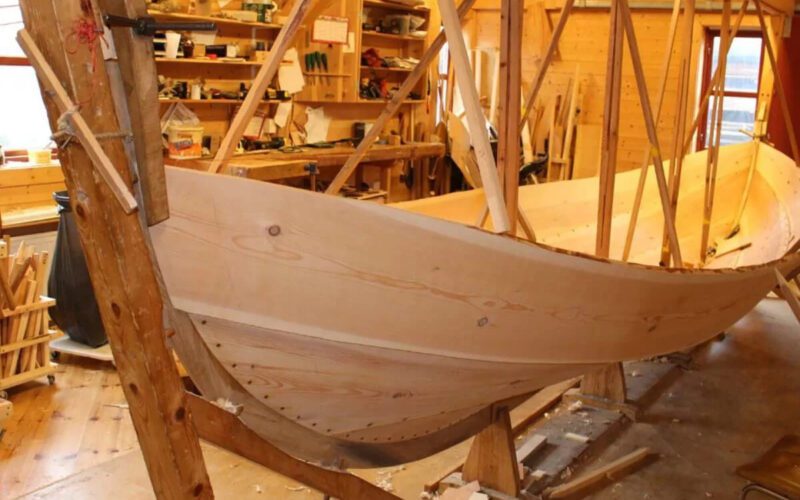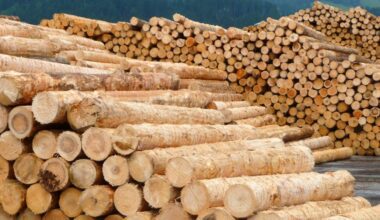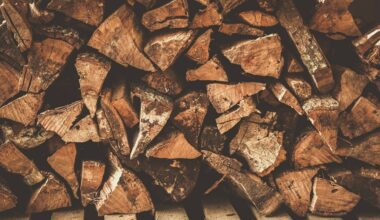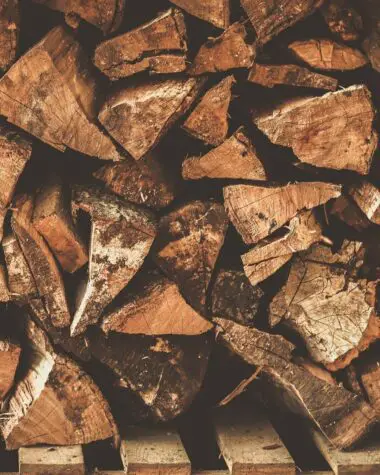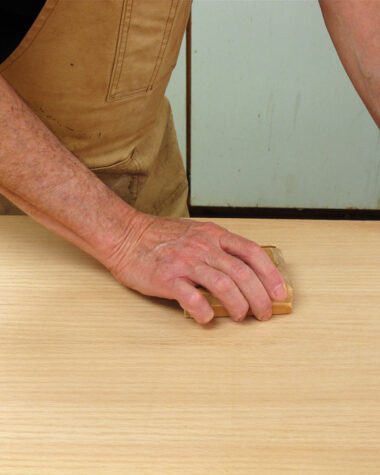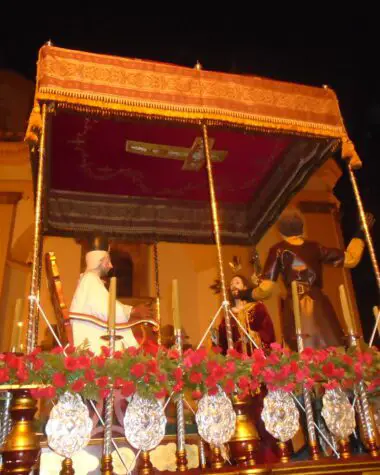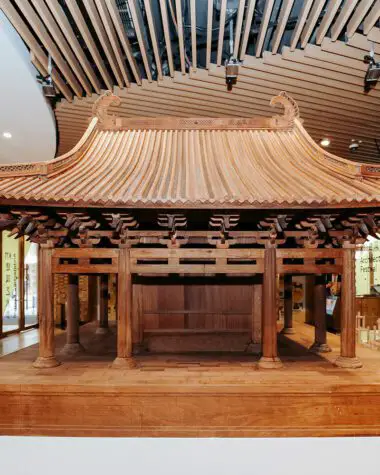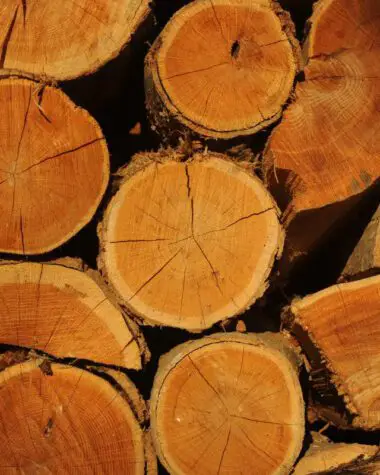Building the traditional Oselvar boat comes with the traditional practices that Norwegian culture has preserved over the years. Furthermore, it includes the expressions, accumulated knowledge, and preserved skills of the people.
Thus, it is the reason why this traditional boat remains in existence despite the threat that occurred some years ago. You’ll understand more about the journey of Oservar wood in Norway and the richness of this wooden boat as you continue reading this article.
Did You Know?
The very name Oselvar originated in the mid-18th century. Oselvar boats were named after the Oselva River in Os, Hordaland County. This river was a significant location for boat manufacturing. These traditional boats had been used for centuries, specifically in the outside parts of Hordaland. In the same period, boat construction was an important sector in Os. Many locals worked in the field, including those living on the opposite side of the fjord and in the nearby village of Tysnes.
However, it’s interesting to note that before the 18th century, Oselvar boats were exported as kits, which dates back at least to the 1500s. The Shetland and Orkney islands in Scotland were the usual destinations for the Oselvar boat kits. The Oselvar boats had to be disassembled to traverse the North Sea. The wooden boats were then “flat packaged” and assembled into a kit, allowing for simple transportation.
Interestingly, the clever Oselvar boat craftsmen devised a great idea to avoid sending complicated instructions for reassembling the boat. Instead, they sent master Norwegian boat builders to rebuild the Oselvar boats once the kits were successfully exported.
Norway: The Root of Oselvar Boat Building
Norway is well-known for its deep coastal fjords, glaciers, and mountains. As a result, it has become a favorite destination for skiing, fishing, and hiking. Keeping in mind the natural abundance of tree species in the Norwegian forest, working with wood is sacred in the country’s history.
Moreover, Norway continues to be a country where the old expertise of working with wood permeates all facets of life, from the vibrant, traditional wooden buildings of Bergen to the well-preserved examples of Viking ships that date back to the 9th century displayed at Oslo’s Viking Ships Museum.
One needs to better understand Norway’s deep relationship with living nature to understand the historical, cultural, social, and spiritual value of Norwegian Oselvar boats. At the very start, when the boat builders search for materials, they must know exactly what they are looking for. Thus, building an Oselvar boat always begins with picking the right type of wood.
On the one hand, the trees must be large enough to accommodate the broad boards used to construct Oselvar boats. To ensure the longevity of the wooden boats, the construction materials must, however, be of the highest quality. Fortunately, Oselvar boat builders with experience have an extensive knowledge of wood as they can immediately tell what kind of wood at first glance.
A trained eye for quality is extremely important for properly observing and examining the wood. In the forest, the boat builders must look for naturally bent pine trees that will compromise the interior of the Oselvar boats. Apart from pine wood, oak wood is used to build the keel.
UNESCO and The Oselvar Boat Building
The year 2016 marked a significant breakthrough in the production of Oselvar boats. At that point, the historic craft received UNESCO’s approval and was added to the esteemed list of Good Safeguarding Practices. This honorable accolade highlights the modernization of the traditional building and usage learning process, which is essential for preserving the craftsmanship of Oselvar boats for future generations.
Additionally, the Oselvarverkstaden foundation, a well-run non-profit organization, put a lot of effort towards earning the recognition. A group of enthusiastic and committed local boatbuilders and Oselvar boat owners came together to form Oselvarverkstaden. Thus, Norwegian society appreciates and recognizes the ancient craft regarding the build and use of Oselvar boats as a valuable intangible cultural heritage.
Indeed, Oselvar boats have made it today because of the rich oral tradition of passing the skills, knowledge, rituals, and practices of the local community engaged in the ancient craft. The art of building Oselvar boats is also intricately related to understanding and preserving nature. It is in the living nature where traditional craftsmanship is incorporated.
Rescuing The Culture of Oselvar Boats
Since the Oselvar was no longer used regularly after 1960, many of them were destroyed. Due to this, the boats were no longer viable for the boatbuilders, and many of them found new jobs. It appeared as though the Oselvar boat would vanish for a while.
Fortunately, some people saw the risks and attempted to protect the boat and the surrounding culture and knowledge. A boatbuilding course was organized between 1980 and 1982, with some of the last remaining boatbuilders serving as master instructors. Harald Dalland and Nils Olav Solbakken, two students, went on to work professionally as boat builders.
Meanwhile, the Oselvarverkstaden, a publicly sponsored workshop with the mission of preserving the culture of manufacturing Oselvar boats, opened its doors in 1997. New generations of boatbuilders receive new knowledge from Dalland and Solbakken. These new learnings include constructing new boats, repairing damaged boats, documentation, and research.
In addition, many private individuals and nonprofit groups volunteer their time to help maintain and promote the use of the Oselvar boat. In some regions, training future generations of boat users includes using the Oselvar boat as part of secondary education.
Thus, more than 85 boats have been built, and 40 have had repairs. Four builders participate, and five apprentices are still actively working. They get access to materials, tools, and a workshop where skill sharing is encouraged.
From negotiating with material suppliers to rigging and testing the finished product, the construction of the 5m to 10m boats made for racing, freighting, or fishing takes 500 to 600 hours. Additionally, the builders participate in seminars and exhibitions locally and abroad, conduct field investigations, and give demonstrations.
The magnificent example of the Oselvarverkstaden nonprofit foundation is more than merely inspiring. It points to the social power of people who can operate independently of any government to address national and global issues.
Uses of Oselvar Boats
Interestingly, Oselvar boats weren’t just used for transportation. It was also used for recreational purposes. This boat could achieve grace and speed, perfectly suited for rowing and sailing competitions.
On Midsummer’s Day in 1871, the Bergen Sailing Association organized the first race. Currently, several sailing organizations and clubs are working to spread awareness of the Oselvar traditions. These organizations and clubs emphasize the usage of Oselvar boats as both recreational and sporting vessels. After a public vote, the Norwegian Society for Sea Rescue designated the Oselvar boat as the country’s official vessel in 2009.
Final Thoughts
Nowadays, when modern-day technologies pave the path to a brighter future, people must not forget the legacy of their ancestors. This notion went alive years ago when Norwegians in the country of Hordaland stood for preserving the Oselvar boat. Without their initiative, people may have forgotten what it feels like to experience the magic of bringing wood to life with their own hands, minds, love, and labor to craft the traditional Oselvar boat.
